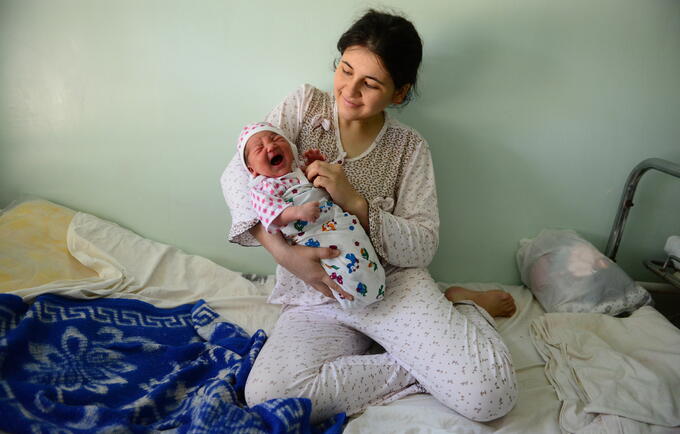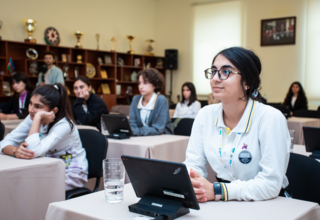Teenage pregnancy is on the decline in Eastern Europe and Central Asia, but some countries still have high – and in some cases even increasing – adolescent birth rates. And some population groups, such as national minorities, are particularly affected.
UNFPA’s 2013 State of World Population Report highlights the main challenges of teenage pregnancy and its serious impacts on girls’ education, health, and long-term employment opportunities. The report also shows what can be done to curb this trend and protect girls’ human rights and well-being.
In the Eastern Europe and Central Asia region, Tajikistan is the country with the highest adolescent birth rate (54 births per 1,000 women aged 15-19), followed by Georgia, Azerbaijan, Romania, Bulgaria, and Turkey. The Caucasus is the sub-region with the highest adolescent birth rate (an average of 37.3); the regional average is 32, significantly higher than the rates found in Western Europe (for comparison: Switzerland has a rate of 4).
Teenage pregnancy in Eastern Europe and Central Asia affects some population subgroups disproportionately: married adolescents, youth from linguistic, religious, and ethnic minorities including Roma youth, adolescents from lower income groups or from rural areas, migrants or internally displaced persons, out-of-school youth, street children, and other vulnerable and marginalised groups. In addition, adolescent girls who face physical, emotional, and socioeconomic challenges that compound their vulnerability are at increased risk of pregnancy when they encounter multiple forms of discrimination and when their special needs for reproductive health are not met.
UNFPA advocates for a human-rights-based approach that includes ensuring the right to access affordable sexual and reproductive health information and services, including contraceptives; access to safe abortion where legal; providing comprehensive and age-appropriate sexuality education both in and out of schools; and the ban of marriage under the age of 18. It also urges governments in the region to combat social and cultural beliefs that contribute to the lower status of women and girls, and to invest in developing girls’ human capital by maintaining girls in schools and ensuring quality education for all.
Learn more about our work on adolescent pregnancy:




